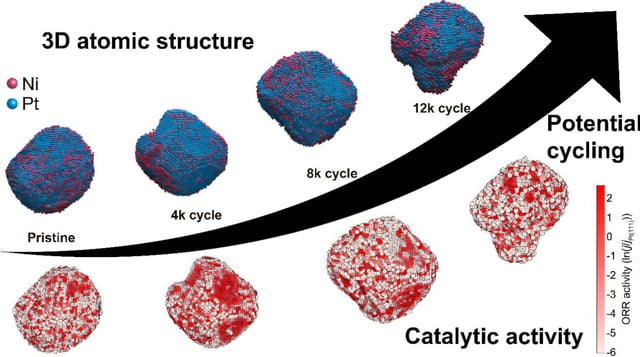Overview
- Using neural network–assisted atomic electron tomography with AI-based corrections, researchers mapped the positions and identities of individual atoms in catalyst nanoparticles across thousands of cycles.
- Gallium-doped PtNi retained roughly 96% of oxygen-reduction activity after 12,000 cycles compared with about 83% for undoped PtNi, indicating approximately 4% versus 17% loss.
- Atomic reconstructions showed Ga helps preserve octahedral shape and {111} facets, limits nickel leaching from surface and subsurface regions, and maintains beneficial compressive strain.
- The work was led by KAIST with collaborators at Stanford University and Lawrence Berkeley National Laboratory, and it was published online on August 28, 2025, in Nature Communications.
- Authors present the method as a broadly applicable tool for designing longer-lived energy catalysts, noting the findings are based on laboratory-scale cycling tests rather than commercial deployments.

